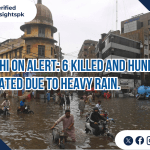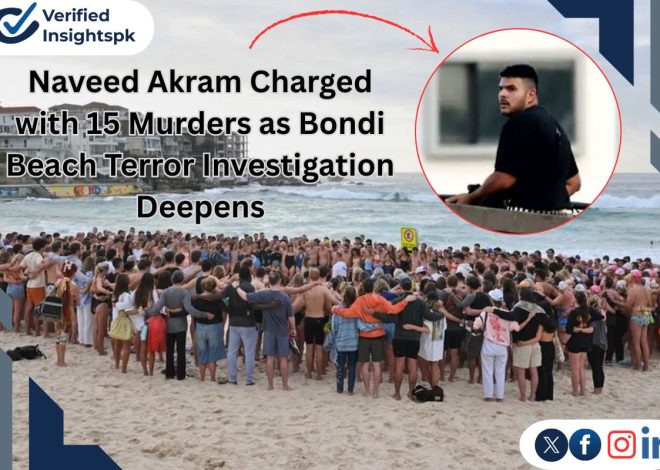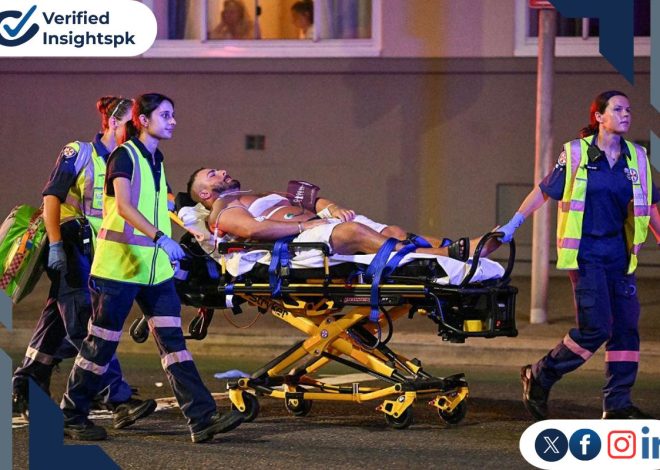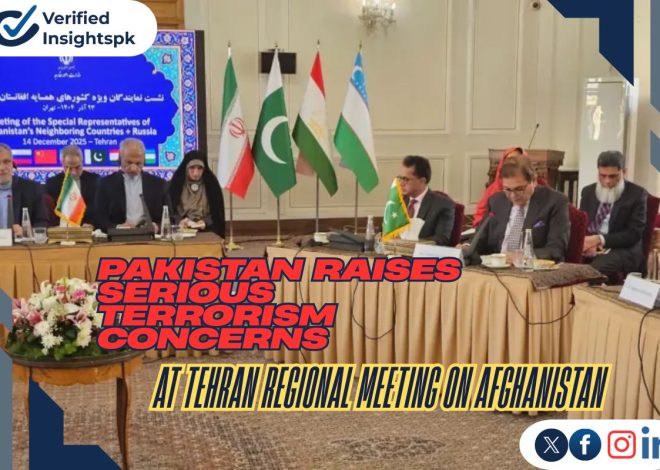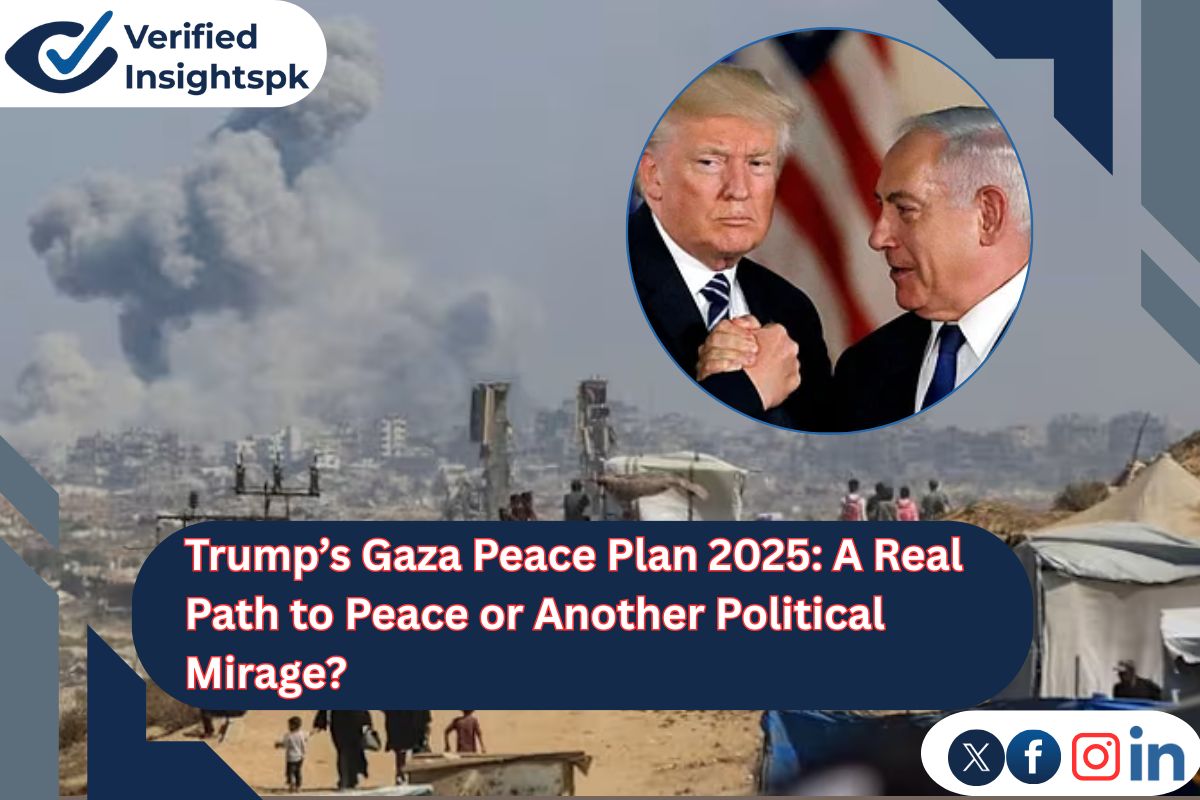
Trump’s Gaza Peace Plan 2025: Real Hope or Political Mirage?
After two years of devastating war, Gaza may finally be approaching a turning point. Negotiators from Israel and Hamas have arrived in Sharm el-Sheikh, Egypt, to discuss a ceasefire under Donald Trump’s 20-point Gaza Peace Plan.
The proposal, “the most serious since the war began in 2023,” promises an end to violence, release of hostages, and reconstruction of Gaza. However, with mistrust high and details still unclear, the question remains: Is this a genuine path to peace, or another political illusion?
Trump’s Gaza Peace Plan 2025 and What it Promises
The framework (Trump’s Gaza Peace Plan 2025), “just a few pages long,” lays out Trump’s vision for ending the Israel-Gaza conflict.
Key highlights include:
- A 72-hour hostage and prisoner exchange between Israel and Hamas.
- An immediate ceasefire will be declared once the first stage begins.
- Gradual Israeli troop withdrawal from Gaza in three phases.
- Deployment of an International Stabilisation Force (ISF).
- Disarming Hamas and establishing a technocratic transitional government for Gaza.
While the plan appears comprehensive, it lacks specific timelines, enforcement mechanisms, and security guarantees, all of which could determine whether it succeeds or fails.
Hostage Release As a Test of Trust
One of the first milestones is the release of 48 Israeli hostages still believed to be in Gaza, including around 20 thought to be alive.
Under the plan, Hamas would release all captives within 72 hours of signing, in exchange for Palestinian prisoners held in Israel.
However, this issue is deeply sensitive. Hostages are Hamas’s main bargaining chip, and the group is hesitant to release them before Israel begins withdrawal.
Adding to tensions, Israel’s recent airstrike on Hamas negotiators in Doha further eroded trust.
Observers say that this first step, if completed, will reveal whether the peace process is truly viable or merely symbolic.
Hamas Disarmament: The Core Dispute
Israel’s primary goal remains clear: to disarm and dismantle Hamas.
Prime Minister Benjamin Netanyahu insists he will not stop “until Hamas no longer exists.”
Trump’s plan calls for full demilitarisation of Gaza, but Hamas has repeatedly refused to disarm until a sovereign Palestinian state is recognised.
So far, the group’s official response has made no mention of giving up arms, suggesting that this could be the biggest obstacle in the entire framework.
Even if Hamas agrees in principle, enforcing disarmament in a war-torn enclave would require years of international supervision and cooperation.
Future Governance: Who Will Rule Gaza?
Under Trump’s blueprint, Hamas will have no governing role once the ceasefire is implemented.
Instead, Gaza will be temporarily managed by a council of Palestinian technocrats supervised by a “Board of Peace” chaired by Donald Trump himself, alongside former UK Prime Minister Tony Blair.
Eventually, control is expected to pass to the Palestinian Authority (PA). However, both sides have reservations:
- Netanyahu’s coalition opposes PA involvement, fearing it would strengthen Palestinian political unity.
- Hamas insists it wants to remain part of a “unified Palestinian movement,” which Israel rejects.
This clash over who governs Gaza may prove more divisive than the ceasefire itself.
Israeli Withdrawal: Unclear Timelines and Boundaries
The plan’s withdrawal schedule is vague, stating that Israel’s military pullout will occur in phases based on “security milestones.”
Maps released by the White House show three stages, ending with Israel maintaining a 15% security buffer zone inside Gaza until it is “secure from terror threats.”
Critics, including former diplomats and regional analysts, argue that this effectively allows Israel to retain control indefinitely.
The lack of clear deadlines for complete withdrawal could make or break the deal.
For Hamas, any continued Israeli presence inside Gaza is unacceptable.
International Stabilisation Force
A multinational International Stabilisation Force (ISF) will be deployed after the ceasefire to monitor borders, prevent arms smuggling, and maintain peace.
Reports suggest Pakistan, Egypt, and several Arab states have been approached to contribute troops.
However, questions remain:
- Who will command the force?
- Will it have the authority to engage militarily if violence resumes?
- How long will it stay in Gaza?
Without clear rules of engagement, the ISF could struggle to maintain legitimacy among Palestinians or effectively deter future conflict.
Missing Pieces
Perhaps the most significant gap in Trump’s plan is its silence on Palestinian statehood.
While it mentions a “pathway to Palestinian self-determination,” it sets no concrete framework for achieving it.
This omission aligns closely with Netanyahu’s position, which rejects a two-state solution entirely.
As former ambassador Maleeha Lodhi pointed out, this approach “robs Palestinians of agency” and resembles a colonial project, with foreign powers deciding their fate rather than Palestinians themselves.
Without a political roadmap toward statehood, experts warn the plan risks being seen as an occupation under another name.
Domestic Politics
For Netanyahu, peace talks carry significant political risks.
His far-right coalition partners have threatened to collapse the government if Hamas survives in any form.
Meanwhile, his corruption trial looms, and ending the war could restart proceedings.
Yet, Israeli public sentiment is shifting. Polls show 70% of Israelis now support ending the war if it ensures the hostages’ release.
Netanyahu is caught between international pressure for peace and domestic pressure to keep fighting.
Global and Regional Reactions
The global response to Trump’s plan has been mixed:
- The US and UK have praised it as a “historic opportunity.”
- Qatar and Egypt, key mediators, are cautiously optimistic but demand explicit guarantees for Palestinian sovereignty.
- Pakistan and several Muslim nations, which had initially been supportive, have since expressed reservations, saying the final version deviates from what they were shown in earlier discussions.
Despite skepticism, there is a growing realization that this might be the only viable path to stop the bloodshed, at least temporarily.
Hope or Mirage?
The Trump peace plan represents a rare moment of possibility, but also a mountain of uncertainty.
Its success depends on three fragile conditions:
- Mutual trust is nearly absent.
- Political will, especially within Israel’s divided leadership.
- Clarity and enforcement are both missing in the current draft.
As one Palestinian analyst put it:
“The plan sounds like peace on paper, but without timelines, guarantees, and justice, it may just be another mirage in the desert.”
Still, with tens of thousands dead and Gaza in ruins, even a flawed plan could be a first step toward ending one of the world’s most painful wars.
Final thought
Trump’s Gaza Peace Plan 2025 (20 points) framework may not deliver a permanent peace, but it offers a fragile pause to the endless cycle of violence.
Suppose both sides act with restraint, and mediators like Egypt, Qatar, and Pakistan push for accountability. In that case, the world might finally witness the beginning of peace rather than another chapter of despair.
For now, the world watches Sharm el-Sheikh — and wonders whether this time, hope will finally hold.


